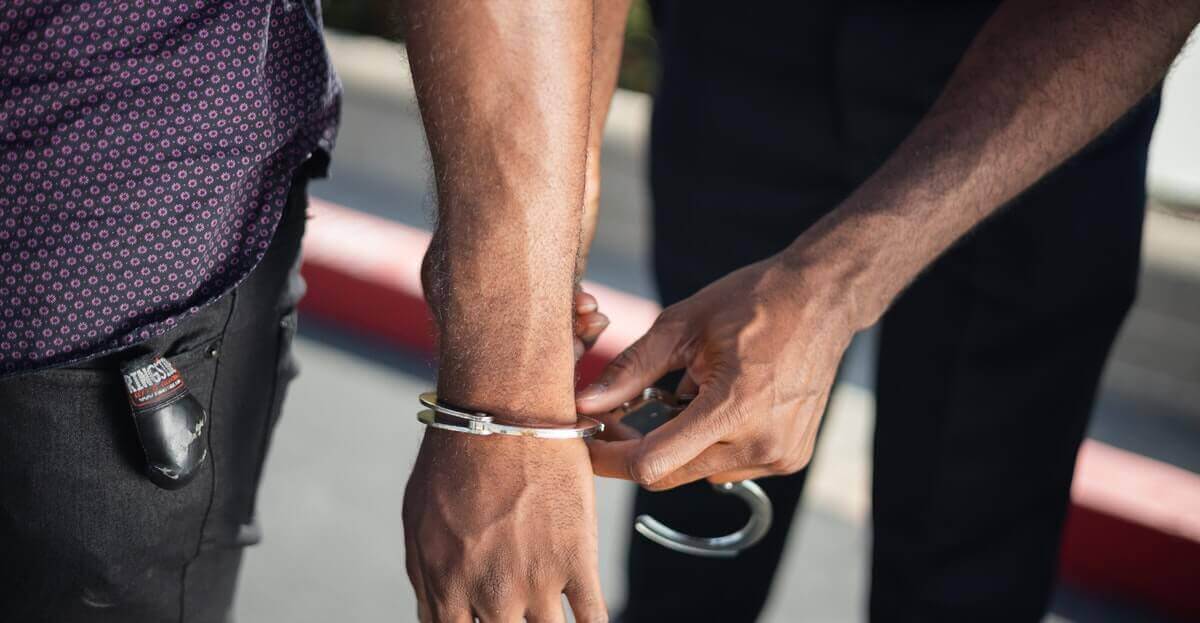Every day, criminal justice professionals are tasked with making decisions that can have a serious impact on the lives of others. One of the most important aspects of their job is risk assessment.
Risk assessment is the process of examining a situation and identifying potential hazards. It helps criminal justice professionals develop strategies to reduce crime and keep people safe. In this blog post, we’ll talk about why risk assessments are important in criminal justice and how they can help cut down on crime and recidivism.
What Is a Risk Assessment?
A risk assessment process entails analyzing and identifying potential events that may negatively affect people, the environment, or property and then making relevant decisions.
Criminal justice professionals conduct risk assessments to predict the likelihood of an individual reoffending. Risk assessments are completed at various points in the criminal justice system, for example, during sentencing or when an offender is considered for release from custody.
The goal of a risk assessment is to help figure out which offenders are most likely to break the law again so that they can get the right amount of supervision and help. A number of factors are considered when going through the risk assessment process, including the type of offense, the offender’s criminal history, and any mental health or substance abuse issues.
A psychological evaluation may be included in some risk assessments. The findings can be used to make decisions about bail, sentencing, parole, and other offender management decisions.
Risk assessment methods are used by probation and parole officers to determine an offender’s risk level and need for supervision, while judges use risk assessments to make informed sentencing decisions. Also, treatment providers can use risk assessments to develop individualized treatment plans, while victim advocates use these tools to come up with safety plans for victims of domestic violence.
What Is a Risk Assessment Tool in Criminal Justice?
A risk assessment instrument, or RAI, uses algorithms to try to predict whether or not a defendant will re-offend in the future. Courts use this tool to decide whether or not to hold a suspect in jail pending trial.
Risk assessment tools can’t be ignored because they are such an important part of the criminal justice system. They are useful in determining which offenders pose the greatest risk to public health and safety and are most likely to reoffend. This data is then utilized in the sentencing, supervision, and release processes.
An Example of a Risk Assessment Tool
There are numerous tools and software programs used in risk assessment, each with its own structure, features, and situations in which it should be used. Some of the most commonly used tools are the Public Safety Assessment (PSA), the Level of Service/Case Management Inventory (LS/CMI), and the Correctional Offender Management Profiling for Alternative Sanctions (COMPAS).
COMPAS
COMPAS is a risk and needs assessment instrument. While the primary purpose of COMPAS is to aid in decisions regarding offender supervision and case management, as well as violent recidivism, general recidivism, and pretrial release risk, the instrument has also been used for general sentencing.
Unlike most risk and needs assessment tools, the COMPAS assessment tool uses artificial intelligence for scoring and does not reveal its scoring methodology. Some debate has been sparked by people’s inability to see how the instrument actually works.
The COMPAS evaluation has more than 130 questions that look at matters such as criminal history, personality, and cognitive behavior, social life, work history, drug use, and financial stability. This sort of data is collected via in-person interviews and criminal records.
LS/CMI
The Level of Service/Case Management Inventory (LS/CMI) is an updated version of the LSI-R. It incorporates a case and risk management tool to help organize and store all information about an offender’s case and supervision.
The survey consists of 43 questions that are asked of the offender during a structured interview. All states that use the LS/CMI offender screening tool use it to set levels of probation, parole supervision, and prison time.
PSA
Pretrial risk analysis is done with the help of the Public Safety Assessment. The likelihood of an offender fails to appear in court and being rearrested for a new criminal offense during the pretrial period is calculated by considering the offender’s criminal history, the nature of the offense at hand, the number of previous instances of failing to appear in court, and the offender’s age at the time of the current arrest.
The PSA is a unique risk assessment system that does not necessitate an interview with the offender to determine risk. The nine questions are instead answered by looking at past arrest records.
Each tool has its own strengths and weaknesses, so it is important to choose the right tool for each situation. Risk assessment tools can be valuable for keeping the public safe if used correctly.
Risk Assessment Categories
In the criminal justice system, there are three main types of risk factors: static, dynamic, and criminal. Each risk category must be considered when determining an individual’s likelihood of reoffending.
Static Risk Factors
Static risk factors such as age, gender, or criminal history are relatively stable and unchanging. Static risks are the easiest to assess because they do not change over time. However, static risks are not always accurate in predicting future behavior.
For example, a young person with no prior criminal history may be less likely to reoffend than an older person with a long criminal history. This is because age is not always a reliable predictor of criminality. Many older offenders committed crimes when they were younger and have since reformed, indicating that risk assessment algorithms can sometimes be inaccurate.
Dynamic Risk Factors
Dynamic risk factors such as employment status or drug use can change over time. Because they change over time, dynamic risks are more difficult to assess. Unemployed people, for example, are more likely to reoffend than employed people, but this may change if the unemployed person finds work.
Similarly, a drug user may be more likely to reoffend than someone who does not use drugs, but this may change if the drug user discontinues use.
Criminogenic Risk Factors
Criminogenic risks are the most difficult to evaluate in a criminal justice risk assessment because they are directly related to crime and criminal behavior. Drug use, mental illness, unstable relationships, and a history of violence are examples of criminogenic risk factors. Someone with antisocial attitudes or associates, for example, may be more likely to reoffend than someone without these risk factors.
As such, when calculating a person’s likelihood of reoffending, it is crucial to account for all three types of risk.
How To Do a Risk Assessment
Typically, the risk analysis and risk management process is divided into four stages. Risk assessment steps are as follows: data collection, score calculation, individual classification, and customization of the justice system’s response, which we will go over now.
1. Data Collection
The first step when using a risk assessment tool is to gather the necessary data and information. This data may come from the person being evaluated, interviews with friends and family, pre-dispositional investigations, agency files, and files from other agencies that have supervised or served the person in the past. A risk management system could also be searched for the necessary records automatically.
2. Score Calculation
Practitioners use the data collected to determine which of the provided values is most indicative of the individual’s current condition. They use these numbers to determine overall and per-domain scores, or they may rely on automated scoring provided by more complex grading systems. Not all assessment methods are computerized and self-scoring.
3. Individual Classification
When classifying individuals into risk categories based on the results of an assessment instrument, professionals refer to the aforementioned agency and developer guidelines. Any number between 0 and 2 is considered low risk, 3 to 5 is considered moderate risk, and 6 to 8 is considered high risk.
Although there is little in the way of empirical guidance, the jurisdictional context in which a tool is used is an important factor to consider when establishing thresholds. As an illustration, a classification scheme that identifies many more people as high-risk than can be effectively managed with current resources would not help guide practitioners in deciding which high-risk individuals to focus on for surveillance and treatment.
When classifying individuals into risk groups using tools for risk analysis, it is useful to recognize resource constraints because doing so can help understand how and where to strategically allocate limited resources to promote public safety through the treatment of individuals involved in the criminal justice system.
4. Customization of the Justice System’s Response
When a person’s risk level and case management requirements have been determined, the justice system can respond accordingly.
Risk evaluation discussions have traditionally centered on determining which factors are predictive of future criminal behavior (stage 1) and integrating those factors into a single scale or risk score (stages 2 and 3). Researchers in the field of risk assessment and criminal justice constantly work to refine existing statistical models of risk prediction and identify new, potentially useful predictors.
The fourth step is to use more advanced tools with case and risk management features. This makes it easier to keep track of how people are doing under their assigned levels of supervision and how they are responding to their treatments.
Because focusing solely on a person’s weaknesses and risks can lead to ineffective plans and outcomes, some case management tools also include the ability to capture a specific person’s strengths and stability factors.
Is There Bias in the Risk Assessment Process?
Criminal justice risk assessment tools are meant to assist decision-makers in determining which offenders are most likely to reoffend by providing information about their past criminal behavior. However, there is growing concern that risk assessments used in criminal justice may be biased against certain groups of people.
According to some studies, these assessments can contain racial and ethnic bias. For example, one study, ProPublica’s Machine Bias, published in 2016, discovered that black defendants were more likely to be labeled as high-risk than white defendants, even when their criminal histories were comparable. Certain groups of people may face unfair treatment and longer prison sentences due to this type of bias.
It is clear that criminal justice risk assessments can be biased, but more research is needed to find out how big of a problem this is. Everyone in society deserves to be treated fairly by the justice system, so this problem needs to be fixed right away.
Why Are Risk Assessments Important? - The Key Takeaways
Risk assessment tools for offenders have been adopted in some shape or form by virtually every state and federal agency in the United States. They are used or considered in making pretrial, sentencing, and parole decisions. If there is some area of criminal law that has not yet been touched by predictive models, it is unlikely that it will be for long.
It is up to the people who create, use, and oversee these technologies to ensure they do so in ways that are consistent with the values of their communities and protect the rights of those on the outskirts of society.






